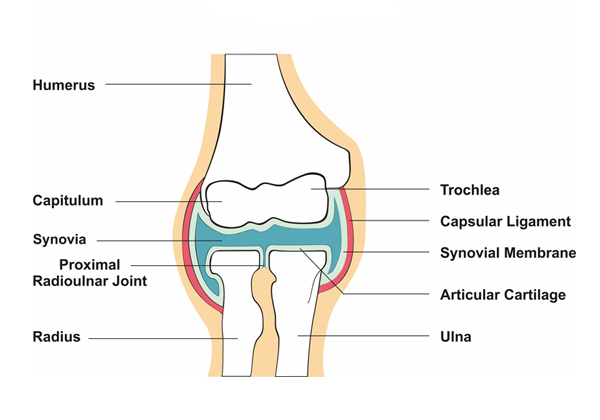Understanding Elbow Ligament Repair: Healing Your Elbow Joint
Overview
What is Torn Ulnar Collateral Ligaments? (UCL)
The UCL is a crucial ligament in the elbow that provides stability to the joint. Sportsmen like athletes, tennis players and other sports that include throwing often experience these tears in the ligament while performing sports which impacts the movement of the elbow.
What is UCL Reconstruction Surgery?
This procedure is for mending a torn UCL. It asks for:
- Harvesting a tendon: A healthy tendon is taken from your body (perhaps from a donor) to act as the new UCL.
- Securing the new tendon: This harvested tendon is secured to the bones at your elbow, replacing the torn UCL ligament.
Benefits of UCL Reconstruction Surgery
- Better stability: Surgery stabilizes the elbow joint and helps in regaining the movement and overall joint function.
- Reduced pain: It is a procedure that helps to reduce the pain associated with a torn ligament.
- Restore function: The surgery restores your elbow’s movement range and allows a swift joint function.
Who Needs Elbow Ligament Repair?
UCL tears are common in sportsmen involved in activities including throwing , but anyone can tear this ligament through overuse or injury. The surgery may be advised if non-operative treatments such as rest and physical therapy fail to relieve the symptoms.
Understanding the Elbow Joint
The elbow joint is a complex structure that involves the upper arm bone and two forearm bones. The elbow joint plays a very important part in everyday activities including bending, straightening of your arm as well as rotating your arm for any activity.
Types of Elbow Ligament Repair Surgeries
There are two primary types of surgeries on elbow ligaments:
- Tendon debridement: Under this procedure the damaged tissue is removed from the existing tendon. It is generally used for tendinitis, inflammation of the tendon.
- Tendon release: This procedure involves lengthening or releasing a tight tendon, and is commonly treats symptoms like tennis or golfers elbow.
The Surgical Procedure
- Anesthesia: Anesthesia is given to make a patient comfortable during the surgery and to avoid pain.
- Accessing the joint: The surgeon makes a small incision to reach the injured area.
- Repairing the ligament: Depending on the surgery, the UCL might have to be repaired (debridement) or reconstructed (reconstruction) with a new tendon.
- Covering the incision: After Surgery, the incision is then closed with stitches and is covered with sterile dressing.
- After-care: You may be advised to wear a splint for a few days to support your elbow and you would be advised on how to regain strength.
Rehabilitation After Surgery
After surgery, regular follow-up appointments and adherence to the prescribed rehabilitation program are very important in order to return to a good level of activity.
Rehabilitation typically includes the following:
- Splinting: Using a splint for a period of time following surgery to protect the healing joint.
- Physical therapy: Strengthening the muscles, increasing flexibility and regaining complete strength of your elbow.
Remember, this information is provided for your general knowledge and is not a substitute for a personal evaluation and treatment plan by a qualified healthcare professional.

